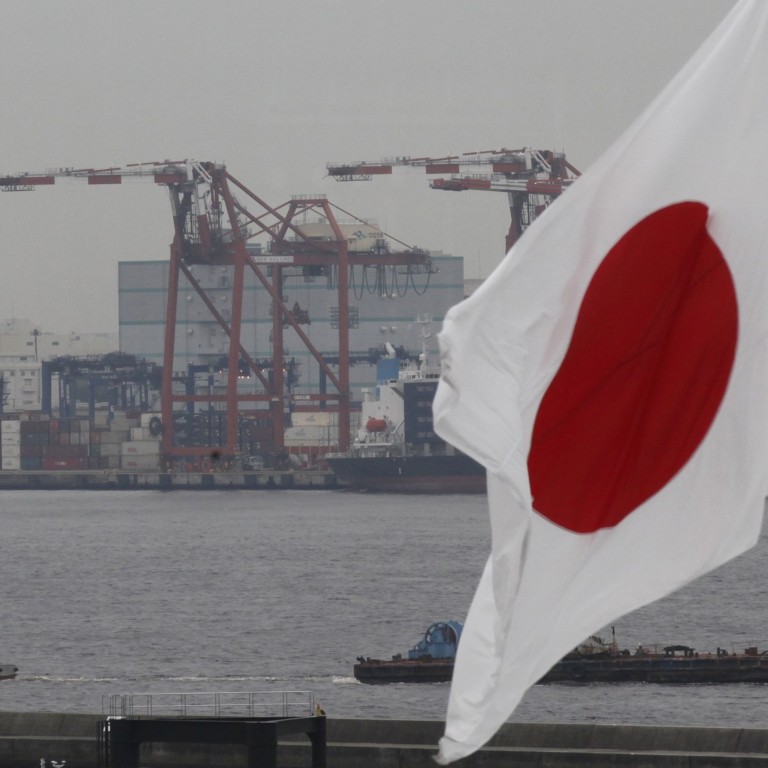
How Japan may offer China road map towards a trade deal with the US
- Promise of large purchases of US goods formed basis for deals, according to Johns Hopkins professor Kent Calder
- Growing competition over technology is adding complexity to the bilateral negotiations
China could use large purchases of US goods, promises of long-term dialogue on structural changes to its economy and active cooperation on infrastructure projects to fashion a short-term compromise that would satisfy the United States and avoid a further escalation of the trade war, an American specialist on Japan said on Monday.
“I’m moderately optimistic about the prospects for a China-US [trade agreement] by March 1, because the quantitative issues, the large-scale purchases and so on, are certainly possible to reach an accommodation,” said Kent Calder, a professor at Johns Hopkins University’s School of Advanced International Studies in Washington.
China investment in US drops to 7-year low in 2018 amid trade war
Calder, a renowned Japan expert who served as a special adviser to the US ambassador to Japan in bilateral trade talks, said Beijing could learn from the past interactions between the US and Japan to de-escalate current tensions.
“Japan made lots of purchases from the United States. For example, big Japanese airlines bought heavily from US aircraft producers,” he said during a speech at the Centre for China and Globalisation in Beijing.

Growing competition over technology is adding complexity to the bilateral negotiations, he warned. Some observers say the trade war between the US and China is evolving into a battle over technological supremacy, as shown by US efforts to block the use of Huawei products in the 5G networks of leading industrial nations.
“Both countries need to think seriously about how to deal with technology, since areas such as artificial intelligence, robotics, big data, electronic components and telecommunications have both economic and also national security implications,” he said.
Why US-China dispute is about so much more than a trade imbalance
The two countries will have to figure out a solution to their disagreements rather than disengaging.
“I don’t think this is another cold war. This is so different from the US and the Soviet Union. We are interdependent,” he said.
Washington has also continued to press for structural changes “with respect to forced technology transfer, intellectual property protection, non-tariff barriers, cyber intrusions and cyber theft of trade secrets for commercial purposes, services, and agriculture” and requested “ongoing verification and effective enforcement” according to a statement from the US Trade Representative.
Calder warned that negotiations to resolve these structural issues could take years. “If you check the revision of foreign investment law, what China is doing is a structural change that could be promising,” he said.
Last week, US and Chinese officials at the vice-minister level concluded three days of talks in an effort to resolve the trade dispute by March 1.
While officials from both sides made generally positive comments about the talks, they did not release details that indicated whether a deal was possible by the deadline.
Vice-Premier Liu He, China’s top trade negotiator, is expected to travel to Washington on January 30 to continue discussions, though the visit could be delayed if the partial shutdown of the US government is not resolved by then, US media reported.
China has more to lose than US in trade war, Credit Suisse says
The world’s two largest economies have been engaged in tit-for-tat trade retaliation since last July, which has created huge uncertainties for the global economy.
If the two sides fail to resolve their differences by March 1, the US has threatened to increase the tariff rate on US$200 billion of Chinese goods.
Due to the front-loading of orders to avoid a scheduled increase in tariffs, China’s trade surplus with the US actually expanded 17.2 per cent to a record high of US$323.3 billion in 2018, the Chinese Customs Administration said Monday.
Chinese negotiators are said to have pledged to “purchase a substantial amount of agricultural, energy, manufactured goods, and other products and services from the United States”, according to a statement of the US Trade Representative.

